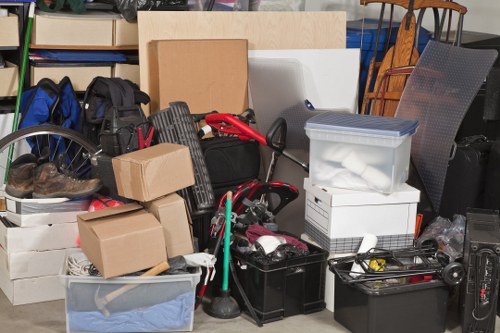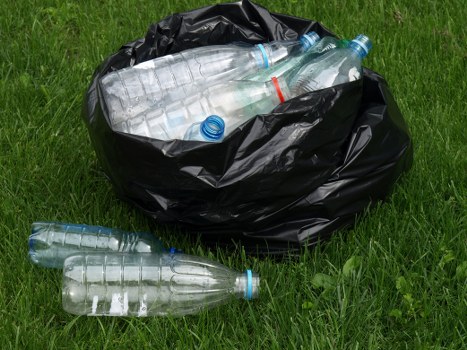Comprehensive Guide to Builders Waste Clearance in Charlton
Understanding Builders Waste Clearance

Builders waste clearance is an essential service for any construction or renovation project in Charlton. It involves the removal and proper disposal of debris generated during building activities, ensuring a clean and safe environment.
Efficient waste clearance not only maintains the aesthetics of the site but also complies with local regulations and environmental standards. Neglecting this aspect can lead to potential fines, health hazards, and project delays.
In Charlton, the demand for reliable builders waste clearance services has surged, driven by the growth in construction activities and an increasing emphasis on sustainable practices.
Types of Builders Waste

Builders waste encompasses a variety of materials generated from construction and demolition projects. Understanding the different types of waste is crucial for effective clearance and disposal.
Common types of builders waste include:
- Concrete and Bricks: Remnants from demolition or overestimation of materials.
- Wood and Timber: Excess or offcuts from framing and carpentry work.
- Metals: Scrap metals from plumbing, wiring, and structural supports.
- Plastics and Insulation: Packaging materials and insulation remnants.
- Gypsum Boards: Materials used for drywall installations.
Proper classification of these materials ensures they are recycled or disposed of in compliance with environmental guidelines.
Why Choose Professional Clearance Services?

Opting for professional builders waste clearance services offers numerous benefits that go beyond mere debris removal. Here’s why hiring experts is a smart choice:
Advantages include:
- Efficiency: Professionals have the expertise and equipment to clear waste swiftly.
- Compliance: Ensures all waste is disposed of following local regulations.
- Safety: Reduces the risk of accidents on the construction site by removing hazardous materials.
- Environmental Responsibility: Promotes recycling and proper disposal methods, minimizing environmental impact.
- Cost-Effectiveness: Prevents potential fines and delays, saving money in the long run.
Investing in professional services ensures that your project runs smoothly and sustainably.
Steps Involved in Builders Waste Clearance

The process of builders waste clearance involves several key steps to ensure thorough and compliant removal of debris from the site.
Here’s a step-by-step overview:
- Assessment: Evaluating the volume and types of waste to determine the appropriate clearance strategy.
- Segregation: Sorting waste materials to facilitate recycling and proper disposal.
- Collection: Safely gathering waste from various parts of the construction site.
- Transportation: Moving waste to designated disposal or recycling facilities.
- Disposal: Ensuring that all materials are disposed of in accordance with environmental regulations.
Each step is crucial for maintaining an organized and compliant waste management system.
Choosing the Right Waste Clearance Company in Charlton

Selecting the appropriate builders waste clearance company in Charlton can significantly impact the success of your construction project. Consider the following factors when making your choice:
- Experience: Look for companies with a proven track record in handling construction waste.
- Licensing and Certification: Ensure the company complies with local regulations and has necessary certifications.
- Recycling Practices: Prefer companies that prioritize recycling and sustainable disposal methods.
- Equipment and Resources: Assess whether the company has the right tools and manpower for efficient clearance.
- Customer Reviews: Check testimonials and reviews to gauge customer satisfaction and reliability.
By thoroughly evaluating these aspects, you can choose a company that aligns with your project’s needs and sustainability goals.
Environmental Impact of Builders Waste Clearance
Proper builders waste clearance plays a pivotal role in minimizing the environmental footprint of construction activities. Here’s how:
Reducing Landfill Use: By segregating and recycling waste materials, less waste ends up in landfills, conserving space and reducing pollution.
Promoting Recycling: Recycling metals, wood, and other materials reduces the need for new raw materials, conserving natural resources.
Lowering Carbon Emissions: Efficient waste management processes decrease the overall carbon footprint of construction projects.
Avoiding Soil and Water Contamination: Proper disposal of hazardous materials prevents environmental contamination, safeguarding local ecosystems.
Embracing sustainable waste clearance practices contributes to a healthier environment and demonstrates corporate responsibility.
Cost Considerations for Waste Clearance Services
Budgeting for builders waste clearance is an integral part of any construction project. Understanding the cost factors helps in planning and allocating resources effectively.
Key cost components include:
- Volume of Waste: Larger projects generate more waste, increasing disposal costs.
- Type of Waste: Hazardous or specialized materials may require additional handling and disposal fees.
- Accessibility: Sites that are hard to reach or have limited access may incur higher transportation costs.
- Frequency of Clearance: Regular waste removal can sometimes be more cost-effective than sporadic services.
- Recycling Requirements: Companies that prioritize recycling may have different pricing structures based on the materials processed.
By evaluating these factors, project managers can select a waste clearance service that fits within their budget while meeting all project requirements.
Regulatory Compliance in Waste Clearance
Adhering to local and national regulations is crucial in builders waste clearance. Non-compliance can lead to legal repercussions, fines, and project delays.
Essential regulatory aspects include:
- Waste Classification: Properly categorizing waste materials according to regulatory standards.
- Licensing: Ensuring that the waste clearance company holds the necessary permits and licenses.
- Documentation: Maintaining accurate records of waste disposal and recycling activities.
- Environmental Standards: Complying with guidelines that protect the environment from construction-related pollution.
- Health and Safety Regulations: Implementing measures that safeguard workers and the public from hazardous waste.
Partnering with a waste clearance company well-versed in regulatory compliance ensures that your project adheres to all legal requirements.
Innovative Solutions in Waste Clearance
The waste clearance industry is evolving with technological advancements and innovative practices aimed at enhancing efficiency and sustainability.
Some of these innovations include:
- Advanced Sorting Technologies: Automated systems that improve the accuracy and speed of waste segregation.
- Recycling Innovations: New methods for processing and repurposing construction materials.
- Eco-friendly Disposal Methods: Techniques that minimize environmental impact, such as composting organic waste.
- Digital Tracking Systems: Software solutions that provide real-time tracking and reporting of waste management activities.
- Green Certifications: Programs that recognize companies for their commitment to sustainable waste practices.
Embracing these innovations can lead to more effective waste clearance operations and promote environmentally responsible construction practices.
Tips for Effective Waste Management on Construction Sites
Implementing best practices in waste management can significantly enhance the efficiency and sustainability of construction projects.
Here are some actionable tips:
- Plan Ahead: Incorporate waste management strategies into the initial project planning stages.
- Educate the Team: Train workers on proper waste segregation and handling procedures.
- Use Reusable Materials: Opt for materials that can be reused or recycled to reduce waste generation.
- Monitor Waste Generation: Regularly assess the amount and types of waste being produced to adjust strategies as needed.
- Collaborate with Professionals: Partner with experienced waste clearance services to ensure best practices are followed.
Adopting these practices fosters a culture of sustainability and efficiency on construction sites.
Future Trends in Builders Waste Clearance
The builders waste clearance industry is poised for significant changes as it adapts to emerging trends and societal shifts.
Future trends to watch include:
- Increased Automation: Greater use of robotics and AI for waste sorting and processing.
- Circular Economy Models: Emphasizing the reuse of materials to create closed-loop systems.
- Green Building Standards: Enhanced regulations that mandate sustainable waste management practices.
- Smart Waste Management Solutions: Integration of IoT devices for real-time monitoring and optimization of waste clearance processes.
- Public Awareness Campaigns: Initiatives aimed at educating the public and industry stakeholders about the importance of sustainable waste management.
Staying abreast of these trends allows waste clearance services to innovate and better serve the needs of the construction industry.
Conclusion
Builders waste clearance in Charlton is a critical component of any construction or renovation project. By understanding the various aspects of waste management, from types of waste to regulatory compliance and innovative solutions, stakeholders can ensure their projects are efficient, compliant, and environmentally responsible.
Take action today: Contact us today to streamline your builders waste clearance needs and contribute to a sustainable future.
